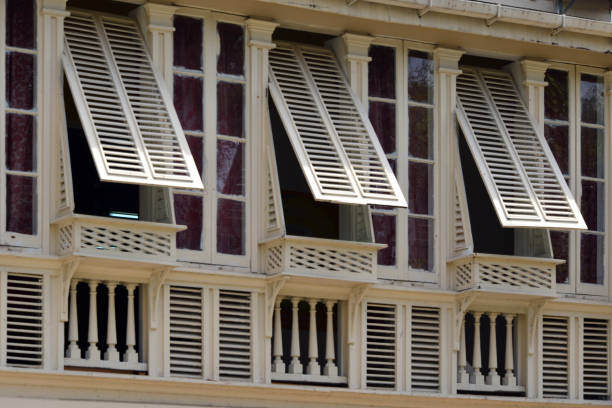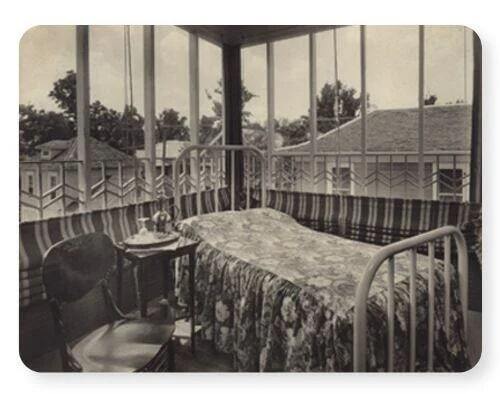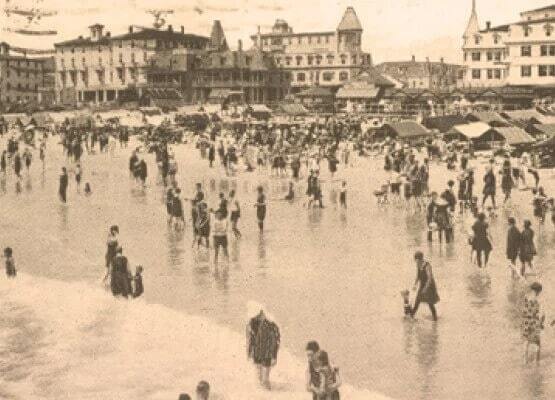Looking back at history, we can see that humans have always found innovative ways to stay cool in hot climates. From ancient Egyptians using evaporative cooling to wealthy families escaping to cooler climates during the summer, the creativity and resourcefulness of people throughout the ages is truly remarkable. These historical methods not only provide insight into our past but can also inspire modern solutions for staying comfortable in today's climate. Let's go over a few of these methods found on Simthson.com!
1. Evaporative Cooling
Evaporative cooling dates back thousands of years. Ancient Egyptians hung wet reed mats or curtains in doorways and windows, cooling the air as it passed through. In Persia, underground aqueducts called qanats worked with wind-catchers to cool homes by drawing air over water, lowering indoor temperatures. This method even inspired a makeshift air conditioner used by President James A. Garfield in 1881.

2. Demerara Windows
Demerara windows, named after a region in South America, were designed in the 18th and 19th centuries to cool homes in sweltering climates. These windows featured perforated sides and louvers that allowed air and light to pass through while blocking direct sunlight. Often made from durable pitch pine, these windows could be propped open from the top, and placing ice or water on the sill would further cool the incoming air.
.jpg?width=654&height=380&name=retractable-awnings%20(1).jpg)
3. Awnings
Awnings have been used since ancient times to provide shade and cool buildings. The Romans used retractable awnings called velaria to shade spectators in the Colosseum. By the late 19th century, stylish awnings were common in the U.S., cooling homes and businesses. They remained popular until the rise of air conditioning after World War II.

4. Sleeping Porches
In the early 20th century, many homes featured sleeping porches—screened-in decks on the second or third floors where families would sleep to enjoy cooler night air. These porches were positioned to catch cross breezes and were thought to promote health by providing fresh air. Historic examples include the Gamble House in Pasadena, California, and even the White House, where President William Howard Taft had a rooftop sleeping porch installed.
5. Summerhouses
Summerhouses, popularized in the late 19th century, were rustic, shaded structures in gardens that provided a respite from the sun. These were particularly common in New York’s Hudson Valley and in places like the Mohonk Mountain House, which boasts 125 unique summerhouses. Though less polished than gazebos, these structures offered a cool retreat, constructed mainly from local materials like American chestnut and cedar.

6. Migrating to Cooler Climates
Historically, people would escape to cooler climates during hot months. In the late 19th and early 20th centuries, wealthy East Coast families often spent summers in the Adirondack Mountains or at seaside resorts like Cape May, New Jersey. These areas provided natural cooling through shaded forests and ocean breezes, a practice that continues in modern vacation habits.
Conclusion
These historical cooling methods not only showcase human ingenuity but also offer inspiration for modern HVAC solutions. By blending traditional techniques with today's technology, the HVAC industry can develop innovative ways to keep us comfortable in today’s climate. As we face increasingly extreme temperatures, looking to the past might just help us create a cooler future.
If you live in the Delaware Valley/Greater Philadelphia area and would like to find comfort within your home, visit our website or give us a call at 215 - 245 - 3200 to learn more.




